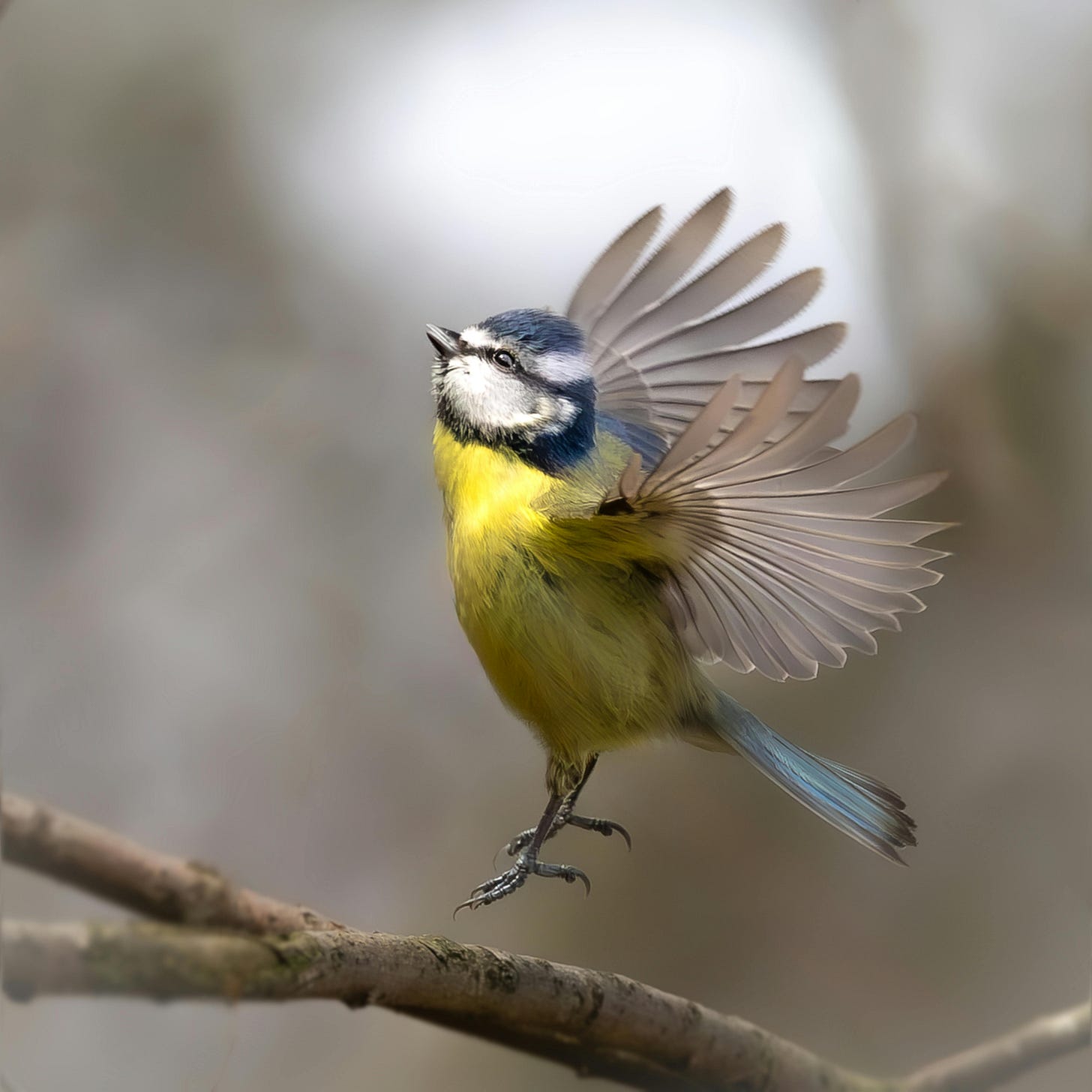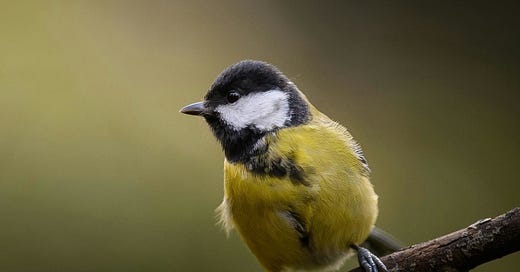Great tits raised by Blue tits fail to pair with conspecifics
Great tit chicks raised by Blue tit foster parents stayed unpaired or paired with Blue tits later in life.
The blue tit single mom tirelessly flies in and out of the nest box. Raising chicks is never an easy job, but this particular bird seems to struggle especially hard. Nine chicks had hatched, she managed to raise four, three of which were caught by the jay. Finally, the time has come, and the last remaining chick leaves the nest box, joining his mom in the canopy of the tree. But this young bird doesn’t resemble his mom—it is a Great tit!

Great tits and blue tits are closely related species that live in similar habitats, breed at about the same time of the year, and form mixed species flocks outside the breeding season. Still, these species normally don’t mix when it comes to pairing, mating, and raising chicks. Once in a while, however, chicks may be raised by foster parents of the other species, for example after a nest takeover. And these chicks may not be able to pair with birds of their own species later in life, a study from 2002 showed1.
For their study, scientists from Norway conducted cross-fostering experiments in woodlands near Oslo with Great tits (Parus major) and Blue tits (Cyanistes caeruleus). During the incubation period, they replaced eggs in Great tit nests with eggs from Blue tits and vice versa. The fledged birds, reared by parents from the other species, were then monitored during their first breeding season to test whether they would pair with conspecifics or with individuals of the species of their foster parents.
The results are intriguing. None of the Great tits reared by Blue tit parents paired with a conspecific. Most of them (8 out of 11) stayed unpaired. The remaining three paired with Blue tits. The researchers concluded that the cross-fostered Great tits were sexually mis-imprinted on the species of their foster parents.
The cross-fostered Blue tits, on the other hand, all found a partner in their first breeding year. Most of them (14 out of 17) paired with conspecifics. The remaining three (all females) paired with Great tits. And guess what? They paired with the three cross-fostered Great tits mentioned above.
Did the three mixed-species pairs have hybrid offspring? No. Genetic analysis revealed that all chicks from these pairs were Blue tits—which means that the Blue tit females had copulated with Blue tit males, regardless of their social bond with the Great tit male, who provided his territory, nest site, and parental care.

Why did cross-fostered Great tits struggle to find a mate? There are different potential reasons. In terms of body condition, the birds did not differ from their conspecifics, ruling out disadvantages due to physical qualities. However, they may reject pairing with conspecifics due to the sexual mis-imprinting in early life. On the other hand, cross-fostered individuals may be rejected by birds of their own species because they fail to respond properly during courtship and mating behavior.
Other studies have shown that cross-fostering affects the life of Great tits even beyond mate choice preferences. Great tits reared by Blue tits forage together with Blue tits, they use similar alarm calls, and fail to respond to intrusions by individuals of their own species. It seems like cross-fostering actually alters their whole species identity.

These findings are exciting because they show that mating preferences are not (entirely) determined by genes, but can be impacted by experiences early in life. At the same time, this study shows that not all birds are impacted similarly by cross fostering. But why?
Why were most cross-fostered Blue tits not mis-imprinted and managed to pair with conspecifics? The reason may be an asymmetry in dominance between the tested species. Great tits, being bigger and stronger, are socially dominant over the smaller Blue tits. Thus, cross-fostered Blue tits may struggle to compete with Great tits in fights for food and nest sites. Failing to recognize their own species may have much more severe consequences for Blue tits, which is why such a trait wouldn’t persist in this species.

Imagine. If all birds raised by parents of another species would struggle to find a partner and fail to reproduce, any species making use of brood parasitism would die out. We wouldn’t have the common cuckoo, the cowbird, or the honeyguide.
Take a look!
Want to see the single Blue tit mom raising a Great tit in action? The breeding has been caught on camera for the BBC Springwatch TV series. Enjoy!
Have a wonderful rest of the week! All the best,





I did not know that! Question - are blue tits and great tits close enough genetically to interbreed? Can they produce viable offspring, I wonder? Especially in the case of fostered great tits?
Very interesting! Where I live, Black-capped and Carolina Chickadees are known to interbreed to the degree that we are encouraged to enter them as Carolina/Black-capped in eBird. They learn each other’s songs, cause all kinds of confusion. Seems like a different scenario with our tits.